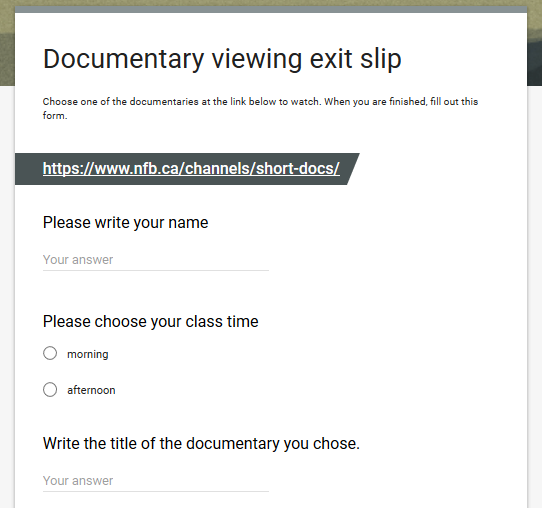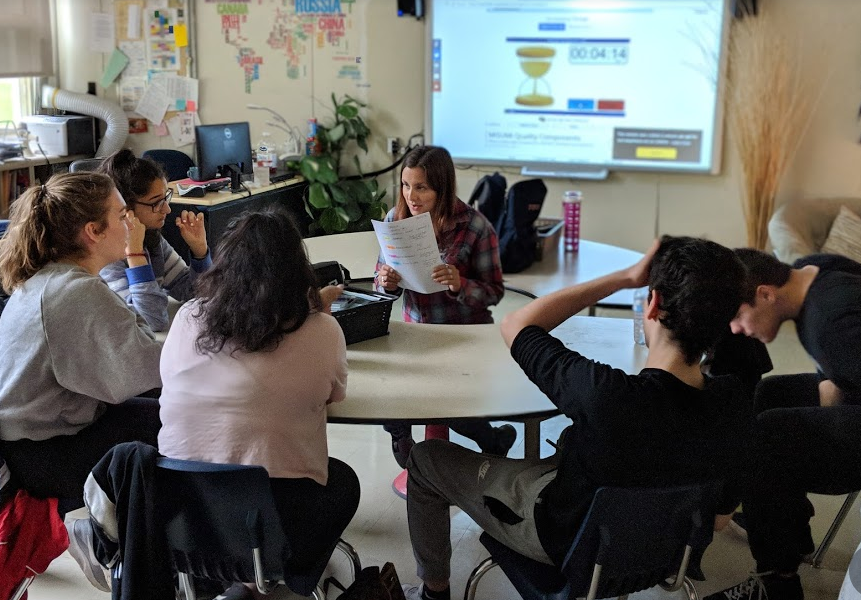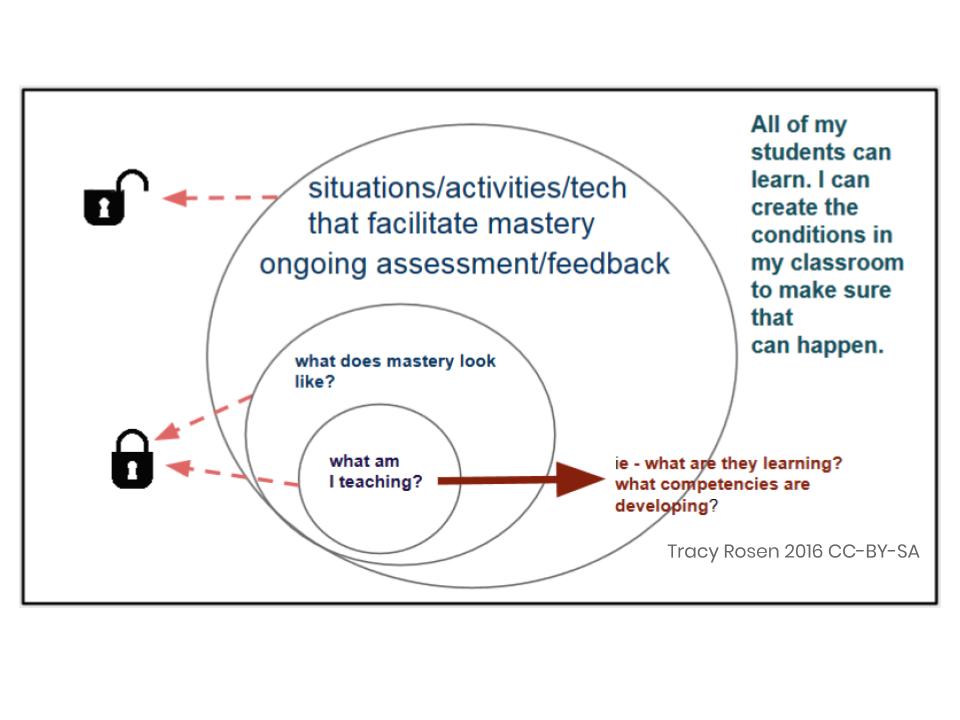Questions for Reflection:
How do you assess your students?
How can we assess learning when students have more choice in the classroom?
Why flexible assessment practices?
There are many reasons why you may be thinking about flexible assessment practices:
- You have changed your classroom around to make it a more flexible learning space and want your assessment to match the environment
- You have students working at different levels or even different subject matters in the same class periods.
- You are noticing that the assessments you currently use are not giving you an accurate picture of what your students know, understand, and can do
- You want to change things up in your classroom
How can we get started with flexible assessment practices?
Every thing we include in our courses helps to tell the story of our course and of who we are as teachers – this is no different for assessment.
Just like any other change to our teaching practice, one step at a time is best. Sometimes it is the smallest little change that can make a big difference in how we relate to our students and their learning. Here are three ways to get started:
Allowing assessment to happen at different times
I have never taught a group of students who were all ready for a specific assessment at the same time. Depending on the nature of my assessment, a tool like Google Forms can help me to collect information from my students at the right time for them.

You can see this form online here: http://bit.ly/docuform
Using Google forms as opposed to paper helps in a few different ways but the main way is that when we use the online form, the answers are magically collated for us into a spreadsheet. We do not have to organize student answers, we only have to read them and decide what to do with them.
Many teachers use Exit Slips or Tickets as a way to assess learning at the end of a lesson. What if we modified the Exit Ticket to be done as a student completes a specific task as opposed to at the end of a lesson? That way students can respond to our questions while the work is still fresh for them and they are also better able to ask any specific questions they may have at the same time. Again, Google forms makes it easier to manage the exit slips as they come in.
This kind of flexible assessment can give us a clearer picture of student progress and questions at a specific period in time, relative to each student.
Tailoring assessment for specific groups of students
Once again, I have never worked in a class where all of my students were working at the same level and were ready for the same assessments at the same time. The easiest way to tackle assessment in this reality is by creating small groups of students to work through a station-rotation model where one of the stations is a teacher station.

Carmen Bodmer-Roy, teacher at Place Cartier in Beaconsfield, Quebec, working at a teacher station.
The beauty of a teacher station is that it allows you to have conversations with small groups of students at a time. When you create strategic groups of students, you can tailor the conversations you have with them according to where they are at in their learning.
A teacher station can also be a time where you observe students doing a specific task. This way you can focus on small groups of students at a time while you are observing student-learning.
Allowing for different ways to demonstrate learning
For those of you who have already started to offer choice in terms of where and how students learn in the classroom, you may be starting to realize that assessment needs to follow suite. But how can we manage this?
One way, is to be very clear about what you need to assess. Too often, all of our assessments are done through writing (quizzes and tests) when writing is not necessarily what it is we are assessing!
Using a visualization tool such as this one could help when we want to offer choice to our students in how they demonstrate their learning, all the while ensuring that we are focusing on what we need to assess.

For a little more discussion about this diagram, please read Planning for Competency Development.
When you do start to assess students at different times and through different media, checklists and observation forms are essential to keep track of the who, what, and when of assessment! These can be on paper or online. For some, the online helps to organize the information quicker, for some, binders of paper are more comforting. The choice is yours.
What theories support the use of flexible assessments?
UDL – Universal Design for Learning – tells us that there is no one way to learn. If there is no one way to learn, than it follows that there is no one way to assess that learning is happening!
For more information about UDL and assessment, read Using UDL to accurately assess student progress.
——-
Resources created by Tracy Rosen (RECIT Consultant, CSSMI), 2018. Thank you to Carmen Bodmer-Roy and her students for sharing their picture taken by Avi Spector.
Thank you!
If you would like more information about these resources or if you have something you would like to add to this tile, please contact Avi Spector or Tracy Rosen.
All materials are expected to be reused and shared according to this Creative Commons license: CC BY-NC-SA 4.0
